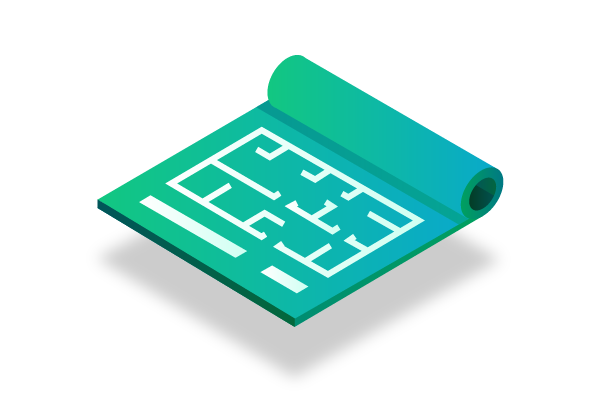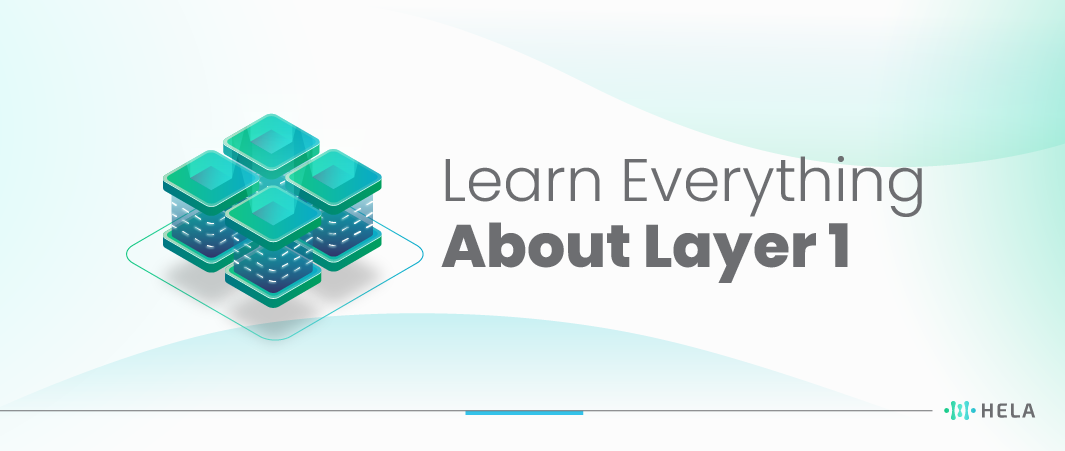The world of blockchain and cryptocurrency has its own lexicon, filled with terms and concepts that might sound alien to the uninitiated. One of these terms, “Layer 1 Chain,” stands as the bedrock upon which many cryptographic projects are built. But what exactly is a Layer 1 Chain, and why is it crucial in the decentralized world?
Layer 1 chain, commonly referred to as base layer protocols, are foundational blockchains that play an indispensable role in the blockchain ecosystem. As we delve deeper into the subject, we will uncover the layers of intricacy and innovation that make these chains a groundbreaking force in technology.
What is Layer 1?
Layer 1 Chain serves as the fundamental blockchain protocol, representing the primary network where all transactions are processed and stored. Cryptocurrencies like Bitcoin and Ethereum operate on Layer 1, providing the essential security, consensus mechanisms, and native tokens that form the backbone of the decentralized ecosystem. Without a robust Layer 1, the entire system could be at risk.
The scalability challenge in the blockchain space is often tackled at the Layer 1 level. Solutions like Ethereum’s shift to Proof of Stake aim to handle increased transaction loads and reduce latency, ensuring a smooth user experience. However, addressing scalability on Layer 1 chain can be complex, leading to the introduction of Layer 2 protocols like Bitcoin’s Lightning Network. These protocols rely on the security and consensus of Layer 1 networks while facilitating faster and more efficient transactions before recording them on the main chain.
Distinct Features of Layer 1 Chain

Layer 1 chain, in the context of blockchain technology, refers to the first layer or primary blockchains that serve as the foundation for decentralized networks. These chains often have distinct features that set them apart from higher layers or secondary blockchains. Here are some additional details about the distinct features of Layer 1 chain:
1. Security
A Layer 1 chain in the blockchain world serves as the foundational layer, and its primary focus is on ensuring exceptional security. It employs advanced cryptographic techniques, such as consensus mechanisms like Proof of Work or Proof of Stake, to achieve immutability and protect against malicious actors.
These mechanisms make altering the blockchain’s transaction history or tampering with data extremely difficult. Additionally, the use of cryptographic hashing functions, public-key cryptography, digital signatures, and Merkle trees further enhances security, providing a robust and tamper-resistant infrastructure for decentralized applications and higher-level protocols built on top of the blockchain network.
Layer 1 chain’s foremost feature is its strong security, achieved through advanced cryptographic methods and consensus mechanisms. This impenetrable foundation guarantees data immutability and protects against malicious actions, ensuring the reliability and integrity of the entire blockchain network and enabling secure decentralized applications to thrive.
2. Decentralization
In the context of blockchain technology, decentralization is a fundamental principle that underpins the operation and governance of Layer 1 chain. In these systems, data and transactions are not controlled by a central authority but are instead maintained by a network of independent nodes, each with a copy of the entire blockchain.
This distributed nature of control and decision-making not only mitigates the risk of single points of failure but also fosters a higher level of resilience and resistance against potential attacks or malicious activities. Decentralization empowers individuals and smaller entities to participate in the network, contributing to a more inclusive and democratic ecosystem where no single entity can monopolize power or influence the rules of the protocol.
Moreover, decentralization plays a crucial role in promoting transparency and trust among participants in Layer 1 chain. By removing the need for intermediaries and middlemen, users can directly interact with the network, ensuring a more transparent and verifiable record of transactions and data. This peer-to-peer nature of communication enhances security, as there is no central target for potential attackers to focus on.
As a result, decentralized Layer 1 chain have gained significant traction in various sectors, including finance, supply chain management, and decentralized applications (dApps), as they offer a more democratic, secure, and trustworthy foundation for innovative solutions and interactions in the digital age.
Also read : Blockchain Adoption: An In-Depth Review
3. Native Tokens
In Layer 1 blockchain networks, native tokens play a pivotal role in their operations, representing the core unit of value within the system. Take the example of Bitcoin, the pioneering cryptocurrency, with its native token BTC serving as the lifeblood of the network. BTC enables peer-to-peer transactions, ensures the security and consensus of the blockchain through mining, and even holds a significant role as a digital store of value, attracting investors and enthusiasts alike.
Similarly, in the case of Ethereum, the second-largest blockchain platform, its native token ETH is the primary means for executing smart contracts and interacting with decentralized applications (dApps). Additionally, ETH fuels the network’s ecosystem, compensating validators and miners for their contributions, and it is often utilized as a speculative asset by traders due to its potential for appreciation.
Beyond mere digital currencies, these native tokens carry profound implications for the broader blockchain ecosystems they reside in. They embody the economic and governance mechanisms that govern the networks, fostering an intricate web of incentives and disincentives that maintain the network’s integrity and functionality.
As the decentralized finance (DeFi) and Non-Fungible Token (NFT) spaces continue to flourish, native tokens have also found new utility as collateral in lending protocols, governance tools for decision-making, and representation of unique digital assets. Understanding the significance of native tokens is crucial for grasping the full scope of possibilities and innovations within the rapidly evolving blockchain landscape.
4. Consensus Mechanism
In the fast-evolving landscape of blockchain technology, Layer 1 protocols hold a critical role in shaping the future of decentralized applications and digital economies. These fundamental blockchains are responsible for establishing the underlying infrastructure on which the entire network operates. Their design choices, such as consensus mechanisms and scalability solutions, greatly impact the performance, security, and decentralization of the entire blockchain ecosystem.
One of the most significant challenges faced by Layer 1 blockchains is achieving a balance between scalability and decentralization. While some protocols, like Bitcoin, prioritize a high level of decentralization by employing Proof of Work (PoW) consensus, they often suffer from limited scalability, leading to slower transaction processing times and higher fees. On the other hand, emerging solutions like Ethereum 2.0 aim to transition from PoW to Proof of Stake (PoS), offering improved scalability and energy efficiency, but questions remain about maintaining sufficient decentralization in this new model. As the blockchain space continues to evolve, finding the optimal trade-offs between decentralization, security, and scalability remains a central focus for Layer 1 protocols, as they strive to unleash the full potential of decentralized applications and transform various industries.
The Architecture of Blockchain: Layer 1 vs. Layer 2

Layer 1 and Layer 2 terminologies help in comprehending the structure of various blockchains, projects, and development tools. For instance, understanding the relationship between Polygon and Ethereum or Polkadot and its parachains becomes clearer when you grasp these layers.
A Layer 1 network, also known as a base blockchain, encompasses protocols like BNB Smart Chain, Ethereum, Bitcoin, and Solana. These are the primary networks within their ecosystems. In contrast, off-chains and other Layer 2 solutions are constructed atop these main chains.
The Role of Layer 1 in a Multi-Layered System

As the name suggests, Layer 1 is just the beginning. In the blockchain ecosystem, there are other layers, like Layer 2 solutions, which are built on top of Layer 1 to enhance scalability, reduce costs, and introduce new functionalities. However, without a stable and secure Layer 1, these additional layers would lack a foundation.
Also read : Introducing Hela: The Layer 1 For Real-World Adoption
Layer 1’s inherent security and decentralization make it an ideal platform for building decentralized applications (DApps) and smart contracts. These self-executing contracts with the terms of agreement directly written into code lines need the stability of Layer 1 to function seamlessly.
Moreover, with the emergence of cross-chain interoperability, Layer 1 chain play a pivotal role in ensuring that transactions and data can seamlessly move between different blockchains. This interoperability is set to be a game-changer in the blockchain realm, further underscoring the importance of a robust Layer 1 chain.
Conclusion
Layer 1 chain, while seemingly a complex term, is the heartbeat of the blockchain world. They provide the essential foundation upon which the vast world of decentralized technology rests. As the blockchain ecosystem continues to grow and evolve, the importance of understanding and appreciating the intricacies of Layer 1 chains becomes even more paramount.
The next time you come across a discussion about blockchain technology or are looking into a new crypto project, remember the role of the Layer 1 chain. It’s more than just a term; it’s the pillar that holds up the vast and ever-expanding world of decentralized systems.

I am Carina Caringal, a technical writer specializing in blockchain engineering concepts, decentralized systems, crypto infrastructure, and Web3 technologies. My work focuses on analyzing and translating complex technical mechanisms into precise, structured, and insightful content for both developers and non-technical readers who want a deeper understanding of the decentralized ecosystem.
My background in blockchain and cryptocurrency is rooted in years of independent research, continuous learning, and hands-on exploration across multiple protocols and network architectures. I study the underlying mechanics of distributed ledger technology, from consensus algorithms and smart contract logic to network scalability, security models, cryptographic principles, and interoperability frameworks. This technical foundation shapes the way I approach every article, ensuring accuracy, depth, and relevance.
- Carina Caringalhttps://helalabs.com/blog/author/carina-caringal/
- Carina Caringalhttps://helalabs.com/blog/author/carina-caringal/
- Carina Caringalhttps://helalabs.com/blog/author/carina-caringal/
- Carina Caringalhttps://helalabs.com/blog/author/carina-caringal/

